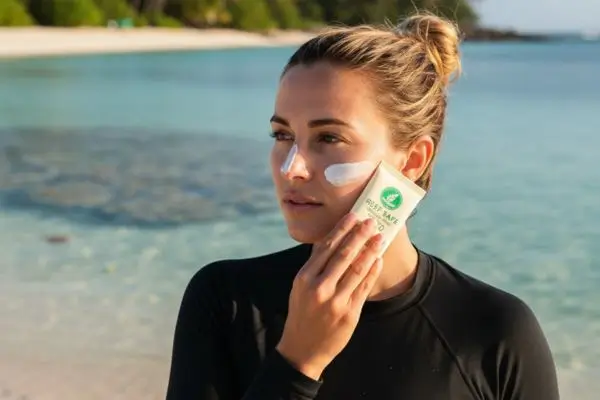The thrill of catching waves is inseparable from the sun’s presence. For women surfers, long hours in the water mean constant exposure to UV rays, making sunscreen an essential part of surf sessions. Yet, not all sunscreens are created equal. Traditional formulas often contain chemicals that harm coral reefs and marine life. Choosing ocean-friendly sunscreen allows women surfers to protect their skin while preserving the waters that sustain their passion.
Why Sunscreen Matters in Surfing
Surfing requires extended time outdoors, often in the peak hours of sunlight. Without protection, UV rays can cause premature skin damage and long-term health risks. Sunscreen serves as a shield, enabling surfers to enjoy the waves without compromising safety. However, many products that protect people do so at the cost of marine ecosystems.
Chemicals such as oxybenzone and octinoxate, commonly found in conventional sunscreens, contribute to coral bleaching and disrupt aquatic life. For women surfers who value sustainability, finding alternatives is key to balancing self-care with environmental responsibility.
What Makes Sunscreen Ocean-Friendly?
Ocean-friendly, or reef-safe, sunscreens are designed without harmful chemicals. Instead, they use minerals such as zinc oxide and titanium dioxide as active ingredients. These compounds act as physical blockers, reflecting UV rays rather than absorbing them, and are far less damaging to marine ecosystems.
Other qualities that define eco-conscious sunscreens include:
- Non-nano particles: Prevents particles from being ingested by marine organisms.
- Biodegradable formulas: Breaks down naturally without polluting the water.
- Plastic-free packaging: Reduces single-use waste often left behind on beaches.
For women surfers, these features ensure that every application aligns with an eco-friendly lifestyle.
Step by Step: Choosing the Right Ocean-Friendly Sunscreen
- Check the ingredients – Look for mineral-based formulas free of oxybenzone, octinoxate, and parabens.
- Choose broad-spectrum coverage – Ensure it protects against both UVA and UVB rays.
- Confirm water resistance – Surfing requires formulas that remain effective in the water for at least 80 minutes.
- Evaluate the packaging – Prefer products sold in recyclable or compostable containers.
- Test the texture – Choose a product that feels comfortable, spreads easily, and doesn’t leave excessive residue.
By following these steps, women surfers can confidently select a sunscreen that supports both personal and planetary health.
Practical Tips for Using Ocean-Friendly Sunscreen
- Apply generously: Many surfers underestimate the amount needed. A thick, even layer ensures better protection.
- Reapply regularly: Every two hours, or after a long surf session, sunscreen should be reapplied to maintain effectiveness.
- Don’t forget overlooked areas: Ears, back of the neck, tops of feet, and hands are commonly missed but highly exposed.
- Combine with other protections: Rash guards, surf hats, and zinc sticks add extra defense while reducing overall sunscreen use.
These practices maximize coverage and minimize the environmental footprint.
Brands Leading the Way
The growing demand for eco-conscious options has encouraged brands to innovate. Some companies focus on small-batch, artisanal formulas with biodegradable packaging, while others scale production to make reef-safe sunscreens more accessible worldwide. Women surfers can explore options tailored to their values, whether supporting local businesses or global sustainability leaders.
Beyond the Product: Building Awareness
Choosing ocean-friendly sunscreen is not just about personal protection—it’s a statement of values. By making thoughtful choices, women surfers can influence their peers, their communities, and even the surf industry. Sharing these practices in conversations or social media posts extends awareness and inspires collective action.
The Bigger Picture
While sunscreen is a critical step, it is part of a larger journey toward sustainable surfing. Eco-friendly surfboards, wetsuits, and accessories complement the choice of reef-safe sunscreen. Together, these actions create a holistic approach to surfing that respects the ocean at every level.
Living the Connection
Every surfer has felt the profound connection that comes from being in the water, riding waves shaped by the planet itself. Protecting that connection means protecting the ocean. Choosing ocean-friendly sunscreen is not a small gesture; it is an act of responsibility, gratitude, and love for the sea.
For women surfers, it represents more than a skincare routine—it is a commitment to ensuring that the waves remain vibrant, the reefs colorful, and the beaches clean for future generations.




